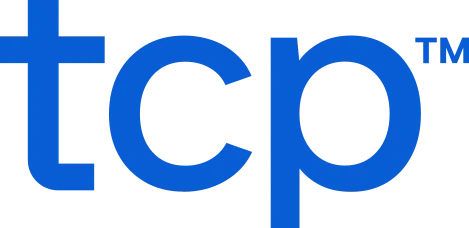Leave management is more than just tracking vacation days and sick leave—it’s a cornerstone of successful workforce management. It ensures employees can take time off without disrupting business operations, all while keeping organizations compliant with complex labor laws.
From compliance risks to employee morale issues, the financial and operational consequences of poor leave tracking can be staggering, and without the right system of tools, it can quickly become a costly and time-consuming process.
Fortunately, modern leave management systems offer organizations a way to simplify processes, reduce errors, and promote transparency. This article explores the risks of ineffective leave tracking, highlights seven benefits of modern solutions, and demonstrates why an effective leave management system is an intelligent investment for your organization.
What is a leave management system?
A leave management system is a structured process or software solution designed to handle all aspects of employee absences, including time-off requests, approvals, and record-keeping.
By centralizing all leave-related activities, leave management systems enable organizations to accurately track time off and provide clear guidelines for managers and employees. When employees want to request time off, they can quickly submit their applications through the system, and managers receive real-time notifications for prompt review.
How does a leave management system work?
As part of a larger employee leave management strategy, it eliminates the need for back-and-forth emails or paper-based forms, saving time for employees and HR staff. Once approved, leave data is automatically updated in a centralized system, making it easy to track how many days have been taken and how many remain.
A leave management system offers valuable insights into employee attendance patterns, allowing organizations to forecast staffing needs, maintain adequate coverage, and promote a fair distribution of leave of absence opportunities among team members.
Leave management systems vs. spreadsheets
Traditionally, companies relied on manual processes like time tracking spreadsheets and paper records, which are prone to human error and tedious to maintain. Modern, automated leave management systems offer comprehensive dashboards, often cloud-based platforms, and integration with other HR tools such as payroll software.
These systems reduce administrative burdens, bolster data accuracy, and enhance employee satisfaction by providing a more transparent and efficient leave process.
Whether in small businesses or large enterprises, a well-implemented leave management system is key to efficiently organizing time-off requests, maintaining compliance with labor regulations, and optimizing workplace productivity.
Why organizations need a leave management system
Effectively tracking employee time off is essential for fostering a productive and engaged workforce. Whether it’s a single PTO day or extended leave for family or medical reasons, it is crucial to have suitable systems to monitor absences and determine eligibility for paid and unpaid leave.
Relying on outdated processes or inefficient technology makes it difficult to clearly understand employee attendance patterns. This lack of clarity can disrupt business operations and lead to significant financial losses.
If you don’t have a transparent process for managing accruals or granting leave of absence requests, you run the risk of costly lawsuits or noncompliance penalties with state or federal laws. Here are some of the ways not having a leave management system can hurt your bottom line:
Increased compliance risks
Not only do you want to correctly track time off so you have a solid understanding of when employees are out and how often, but you also need to make legally required leave accessible to eligible employees.
For example, the Family and Medical Leave Act (FMLA) requires employers with more than 50 employees to provide eligible employees with up to 12 weeks of annual unpaid family or personal medical leave. In addition, employers in states such as California, Connecticut, Massachusetts, and New York must also comply with state-specific leave laws, some of which require paid leave.
Costs of excessive absenteeism
Unplanned or excessive absenteeism can wreak havoc on an organization’s budget. Studies suggest that absenteeism costs U.S. employers $1,685 per employee per year, to as high as $3,600 per hourly worker and $2,650 per salaried employee.
These costs can stem from the amount needed for replacement workers, overtime pay for employees who fill in when others are absent, or incorrect time-off eligibility calculations, leading to employee overpayments.
Low employee morale and engagement
Poor leave of absence policies can frustrate employees, mainly when errors in tracking or approvals occur. For instance, a miscalculated leave of absence balance might prevent employees from taking time off, leading to dissatisfaction and decreased productivity.
Disengaged employees cost U.S. businesses between $450 billion and $550 billion annually and $8.8 trillion globally. A streamlined leave management system reduces confusion and promotes fairness, improving morale and encouraging employees to remain engaged and motivated.
While a leave management system can help mitigate these risks by automating time tracking and aligning your policies with legal requirements, it will also protect your organization from costly penalties.
What are the top benefits of a leave management system?
The seven top benefits of a leave management system include:
- Automating processes and reducing errors
- Real-time leave monitoring
- Easy regulatory compliance
- Alignment of leave requests
- Automated notifications
- Smoother workforce management integration
- Better manager-employee communication.
Let’s explore each of these proposed benefits:
1. Automating processes and reducing errors
Manual tracking systems are prone to errors that result in incorrect balances, overpayments, or miscalculated accruals. A leave management system automates these processes, ensuring accurate and efficient leave tracking across your organization.
Managers, employees, and HR can access a centralized portal for all time and attendance activities. With time-off requests and reporting handled in the cloud, manual absence tracking becomes a thing of the past.
2. Real-time leave monitoring
Access to real-time data on employee leave balances and accruals helps managers identify trends, such as employees nearing their leave of absence limits or those not taking enough time off. These insights allow managers to make informed decisions about staffing and address potential burnout.
3. Regulatory compliance made easy
Navigating leave laws can be challenging, particularly for businesses operating in multiple states with varying regulations. A leave management system maintains compliance by automating policy enforcement and tracking eligibility for leave under laws such as FMLA and state-specific mandates.
Not only does this minimize legal risks and confirms employees receive the time off they’re entitled to, but it also promotes fairness and trust for your employees.
4. Alignment of leave requests with organizational policies
An efficient leave management system eliminates the need for manually tracking carryover rules and leave exceptions. By embedding your leave policy requirements directly into the software, the system verifies requests automatically adhere to established guidelines.
This streamlines the approval process for managers and removes concerns about approving requests that violate policy, while also ensuring accruals are accurately applied.
5. Automated notifications for more efficient leave management
Customizable notifications let you know when employees submit time off requests, when requests are approved, and when employees are approaching time off limits. You can also configure the software to remind managers when an outstanding request requires their attention.
Instead of requests slipping through the cracks or sitting too long without a response, you can resolve requests and take quick action when exceptions need immediate attention.
6. Smoother workforce management integration
A robust leave management system integrates seamlessly with other workforce management tools, such as payroll, scheduling, and human capital management (HCM) platforms. With these integrations, employee leave data flows accurately across systems which reduces manual data entry and prevents payroll errors.
For example, approved leave requests can automatically update scheduling systems, helping managers plan ahead and avoid unnecessary overtime costs.
7. Boosting manager-employee communication
When employees have an easy-to-use portal to use to request time off and see their balances, they don’t have to worry about tracking down their manager to do this for them.
In addition, with leave bidding tools and the ability to put requests on standby, managers can enjoy a stress-free process for managing future planned leave requests. Managers also have access to historical time off data for their team, so they can easily see who is taking time off and who isn’t.
With this data, managers can speak individually with employees about using their available time off and avoiding burnout.
How a leave management system supports long-term success
Implementing a leave management system is more than a short-term solution—it’s a strategy for long-term success. From streamlining administrative tasks to ensuring labor law compliance, a robust system can save time, reduce errors, and enhance overall efficiency. Here’s a few ways these systems can make a difference for your organization:
- Cost savings – By reducing absenteeism, preventing compliance penalties, and eliminating manual errors, businesses can save significant amounts of money over time.
- Increased productivity – With automated processes and real-time insights, managers and HR teams can focus on strategic initiatives rather than administrative tasks.
- Improved employee retention – A fair and transparent employee leave management system promotes employee satisfaction, reducing turnover rates.
- Enhanced decision-making – Data-driven insights into leave trends allow businesses to make informed decisions about staffing, scheduling, and workforce planning.
Leveling up your leave management system
When you have complete visibility into employee absences and leaves, you can avoid mistakes that cost both time and money. Employee leave management capabilities, like TCP’s leave and accrual management through TimeClock Plus, offer a powerful solution to these challenges by automating processes, maintaining compliance, and providing real-time insights.
By investing in modern tools, organizations can save money, improve efficiency, and build a more engaged and resilient workforce.
TCP Software’s employee scheduling and time and attendance solutions have the flexibility and scalability to suit your business and your employees, now and as you grow.
From TimeClock Plus, which automates even the most complex payroll calculations and leave management requests, to Humanity Schedule for dynamic employee scheduling that saves you time and money, we have everything you need to meet your organization’s needs, no matter how unique. Plus, with Aladtec, we offer 24/7 public safety scheduling solutions for your hometown heroes.
Ready to learn how TCP Software takes the pain out of employee scheduling and time tracking? Speak with an expert today.
What to read next
Explore all resources


